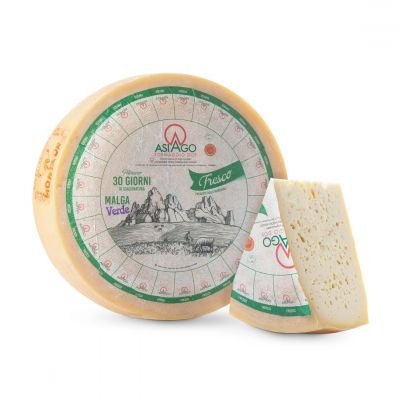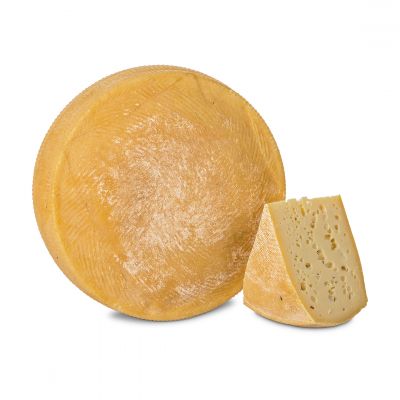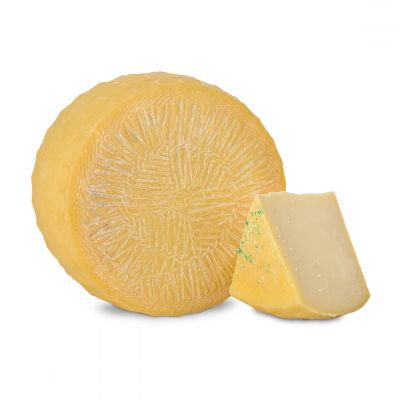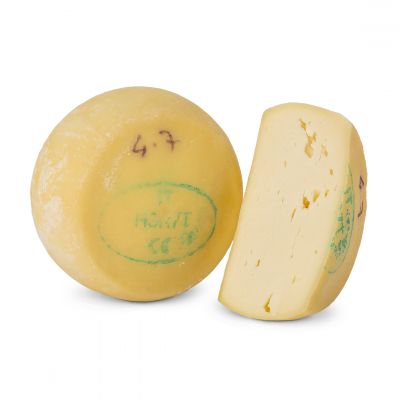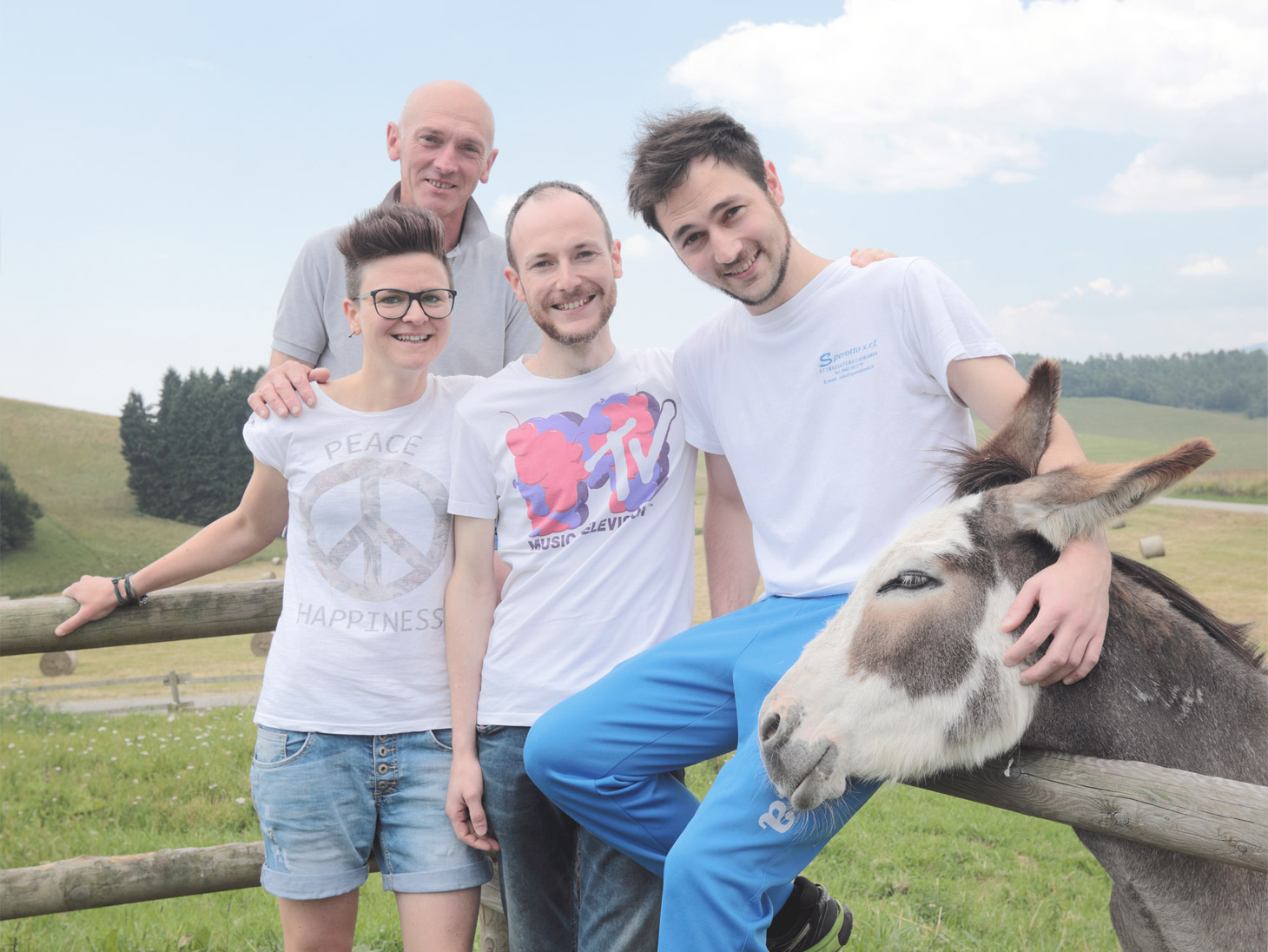
At the end of summer in Asiago and in the neighboring villages the ancient ritual of transhumance is celebrated: after the hot season in the pastures the herds of cows are brought back to the sheds downstream, ready to face the coldest winter.
Every year, to celebrate this tradition, there is also the Cortese family, which since 2003 manages Malga Verde, one of the most recent mountain dairy on the Sette Comuni Plateau.
Located at an altitude of 1100 meters above sea level and completely renewed at the beginning of 2000, Malga Verde is a young company, well-known in the area for its production of Asiago PDO “Prodotto della Montagna”. It is managed by Maurizio Cortese, who founded the business together with his brother Cristiano, and today has been joined by his three sons, Milady, Michele and Davide, who left their respective office works to face this new challenge in the name of tradition.
We interviewed Milady Cortese, who today takes care of their shop, closed to the dairy, and we asked her to tell us all the secrets of a successful business.
How was Malga Verde born?
Once the municipality of Conco restructured it, my father Maurizio and uncle Cristiano took over the management of Malga Verde in 2003, being helped by the whole family. In 2006 we joined the PDO Consortium and started with the production of Asiago DOP. In the meantime, me and my brothers had started different jobs: I was an accountant and my brothers computer technicians. But in 2011 the two founders decided to take different directions, so the following year I left the accountancy company where I was employed and took over the dairy, in partnership with my father. For two seasons I worked in the dairy, helping the old cheese-maker, then I moved to the management of the company shop in the hut. In the meantime also my younger brother, Michele decided to give up the paperwork to join us and he started supporting the cheese-maker. A short time later my brother Davide also made the same choice.
How many are you today and how do you divide the tasks?
Michele works in the dairy with two other young boys who help us in the summer months, I manage the store with the support of a girl on weekends, and Davide is the all-rounder of the group and takes care of marketing and social media, which is increasingly important. My father is still following the breeding, which has always been his passion, helped by two guys, and my mother gives also a hand when needed. This of course in the summer season, which lasts four and a half months, from June to mid-October, while in the winter period, from November to March, we produce home-made sausages in our headquarters downstream.
Why the choice to leave a desk job to take care of a hut?
In my case it was because after five years the accountancy had tired me, the tasks were repetitive and I was missing the contact with people and nature. I needed new incentives. Here I deal with many things and I never get bored.
You are very young, what difficulties are you facing?
There is some arguing and it is part of the game, but we always find the way to solve it thanks to my father’s experience: all we have achieved so far is due to him, who has always worked hard. This is a job that does not include days of vacation, because animals need continuous care. It takes a great passion to do it.
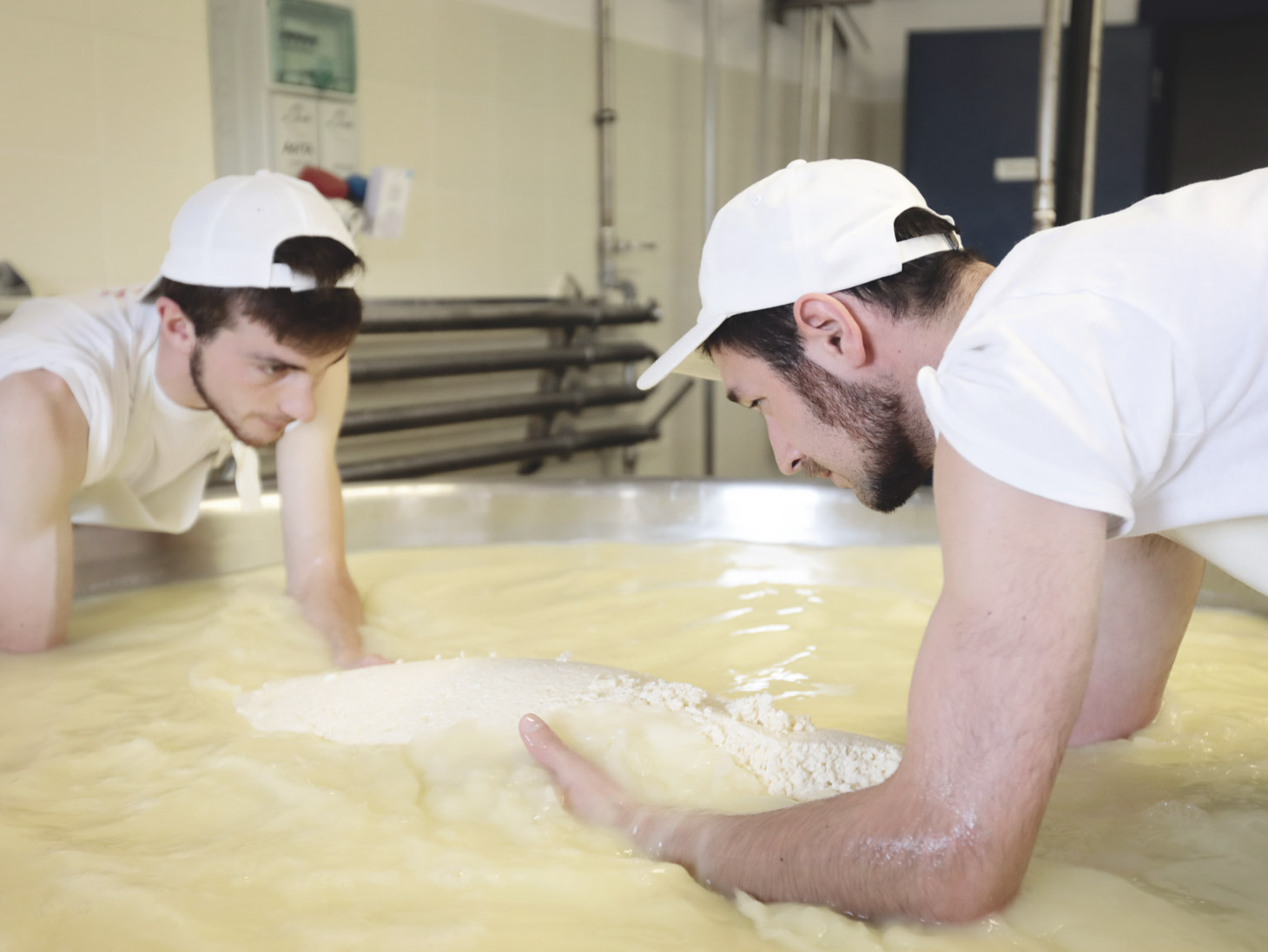
What time does your day start and how long it last?
For my father and Michele the day starts at 5 am. In the shed you work until 12 and then from 16 to 20, while in the dairy until 13, with two cheese productions, one at 5 and one at 9. Then you go to lunch and come back in the afternoon to turn the wheels, from 15.30 to 17. At the shop instead we work from 8.30 to 19.30.
What is your dream in the drawer?
Until two years ago it was to open an agritourism, and we finally realised it at the end of July. It was a long time that customers asked us to stop in our farm to taste the products: now we can give them also this opportunity.
How many cattles you bred on how much land?
We have about 70 dairy cows and in total, with calves and heifers, we raise about 130 animals: a big number for a mountain hut. We have reached our maximum expansion, because here the pastures are not as large as in the plains and the slopes are quite steep. Between the hut and the downstream headquarter, at 650 meters, we have 55 hectares of pasture and about 50 hectares of meadow that we use to produce hay for the winter. The “Product of the Mountain” fire brand is given only to the dairies that produce and mature their cheeses over 600 meters above sea level.
What breeds of cows are raised and how?
We have about half Bruna Italiana and half Friesian cows. Bruna is more suited to cheese making, it produces less milk but better in quality and yield, with a higher percentage of proteins. Frisona instead stands out for quantity of milk produced. The mix is ideal for our production, which is seasonal and lasts only four months.
What are the distinctive characteristics of your products?
The mountain milk is much richer in terms of nutritional values, due to the greater presence of Omega 3, but also to the palate, due to its notes related to grazing. For our aged cheeses matured for more than 45 days, such as Mezzano, Vecchio, Stravecchio and Malga Verde, we use raw milk. For the freshest products instead, like Caciotte and Asiago Pressato PDO Prodotto della Montagna, we use thermised milk: we have purchased a pasteurizer, which allows us to obtain a safer and slightly sweeter products.
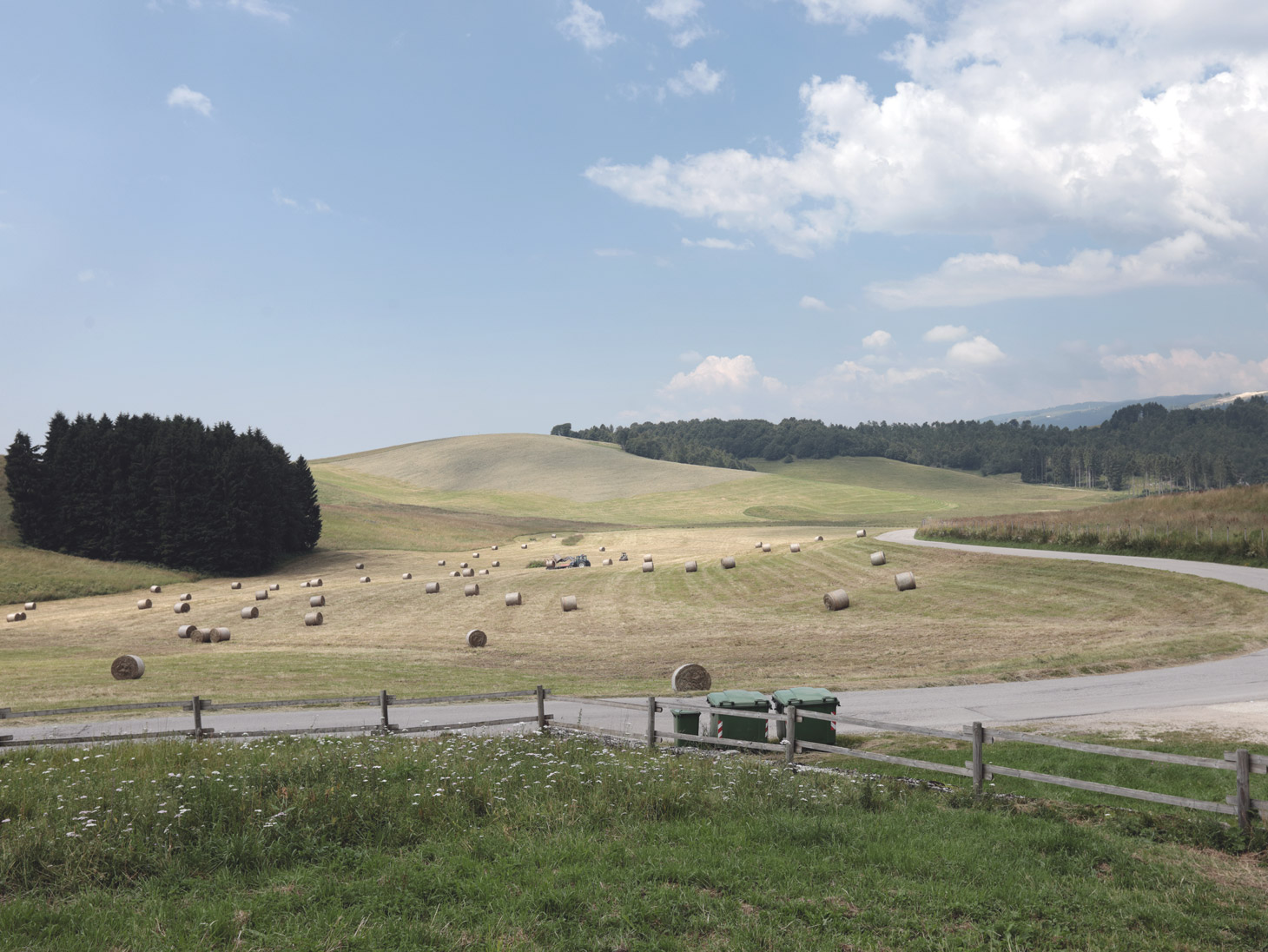
Where does cheese maturing take place?
We have a maturing room in the Alpine hut and two cellars in the company headquarters, one for the seasoning of sausages and one for cheese, all of them at controlled temperature and humidity.
Malga Verde is the only mountain dairy of the Asiago plateau to have obtained the CE mark. How did you manage to do it?
We have applied for CE mark because Malga Verde, thanks to the recent renewing, met all the sanitary and structural health requirements of the European Union regulation. With the CE mark we need to respect different rules compared to the other huts, e.g. at least twice the analysis, but with the advantage that we can market our products anywhere.
How has cheese production changed compared to the past? What innovations have you made?
We have created new products to keep up with what our customers ask us, e.g. the caciotta flavored with rosemary, pepper, chili, cumin. And we bought a multifunctional machine for the production of yogurt, which is going very well.
Asiago Stravecchio is a Slow Food Presidium. What does it mean?
The Presidium mark is given to those types of products in danger of extinction, which must be protected for their rarity: once there were many producers of Asiago d’Allevo, today they are less and less. The Presidium therefore identifies a quality product, but difficult to find: it is a way to preserve it. In the case of Asiago Stravecchio PDO, the complexity lies in the long aging, at least a year and a half.
Giulia Basso
Director of Valsana Magazine - Selezione di Sapori




